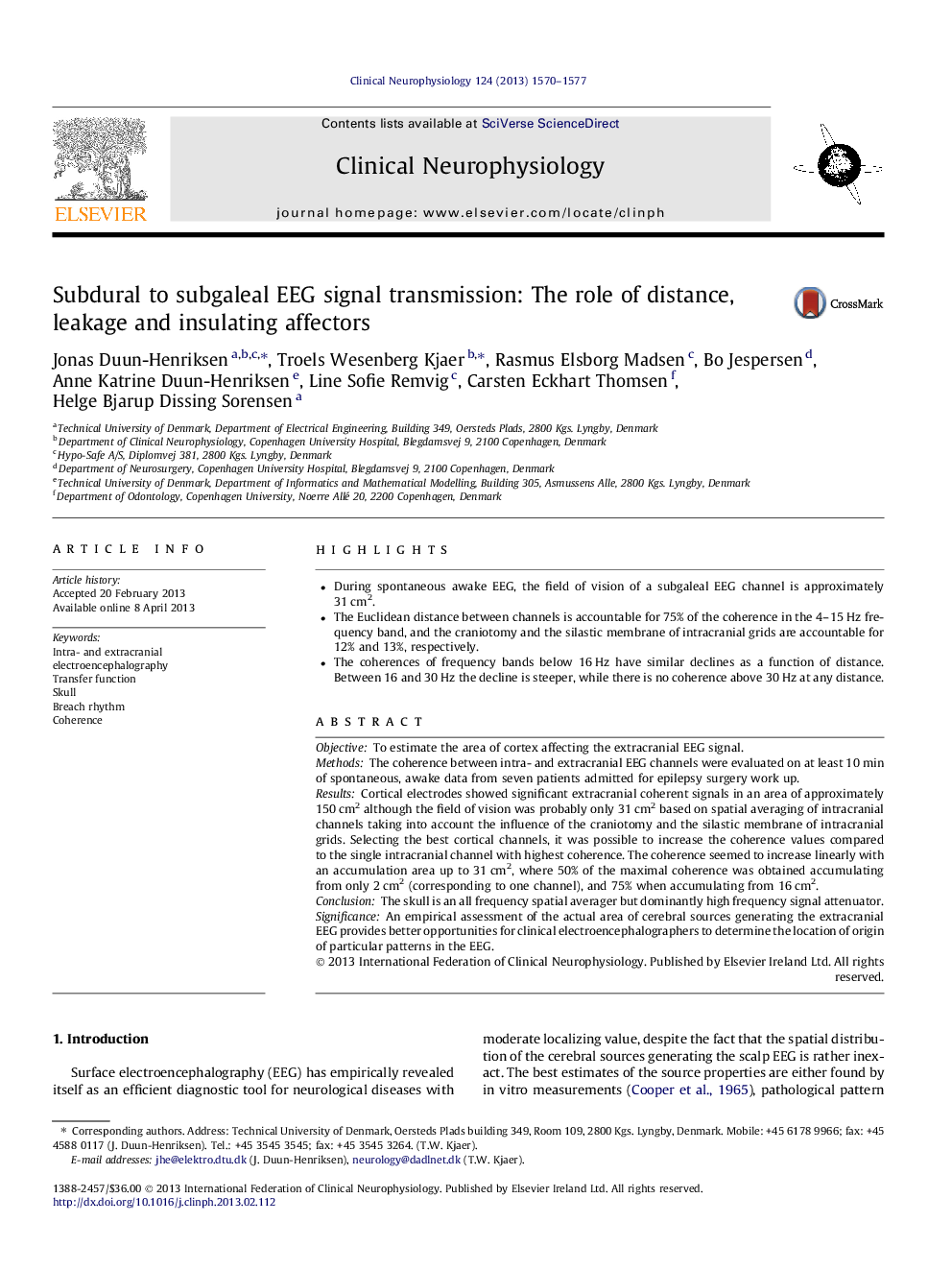| Article ID | Journal | Published Year | Pages | File Type |
|---|---|---|---|---|
| 3045182 | Clinical Neurophysiology | 2013 | 8 Pages |
•During spontaneous awake EEG, the field of vision of a subgaleal EEG channel is approximately 31 cm2.•The Euclidean distance between channels is accountable for 75% of the coherence in the 4–15 Hz frequency band, and the craniotomy and the silastic membrane of intracranial grids are accountable for 12% and 13%, respectively.•The coherences of frequency bands below 16 Hz have similar declines as a function of distance. Between 16 and 30 Hz the decline is steeper, while there is no coherence above 30 Hz at any distance.
ObjectiveTo estimate the area of cortex affecting the extracranial EEG signal.MethodsThe coherence between intra- and extracranial EEG channels were evaluated on at least 10 min of spontaneous, awake data from seven patients admitted for epilepsy surgery work up.ResultsCortical electrodes showed significant extracranial coherent signals in an area of approximately 150 cm2 although the field of vision was probably only 31 cm2 based on spatial averaging of intracranial channels taking into account the influence of the craniotomy and the silastic membrane of intracranial grids. Selecting the best cortical channels, it was possible to increase the coherence values compared to the single intracranial channel with highest coherence. The coherence seemed to increase linearly with an accumulation area up to 31 cm2, where 50% of the maximal coherence was obtained accumulating from only 2 cm2 (corresponding to one channel), and 75% when accumulating from 16 cm2.ConclusionThe skull is an all frequency spatial averager but dominantly high frequency signal attenuator.SignificanceAn empirical assessment of the actual area of cerebral sources generating the extracranial EEG provides better opportunities for clinical electroencephalographers to determine the location of origin of particular patterns in the EEG.
